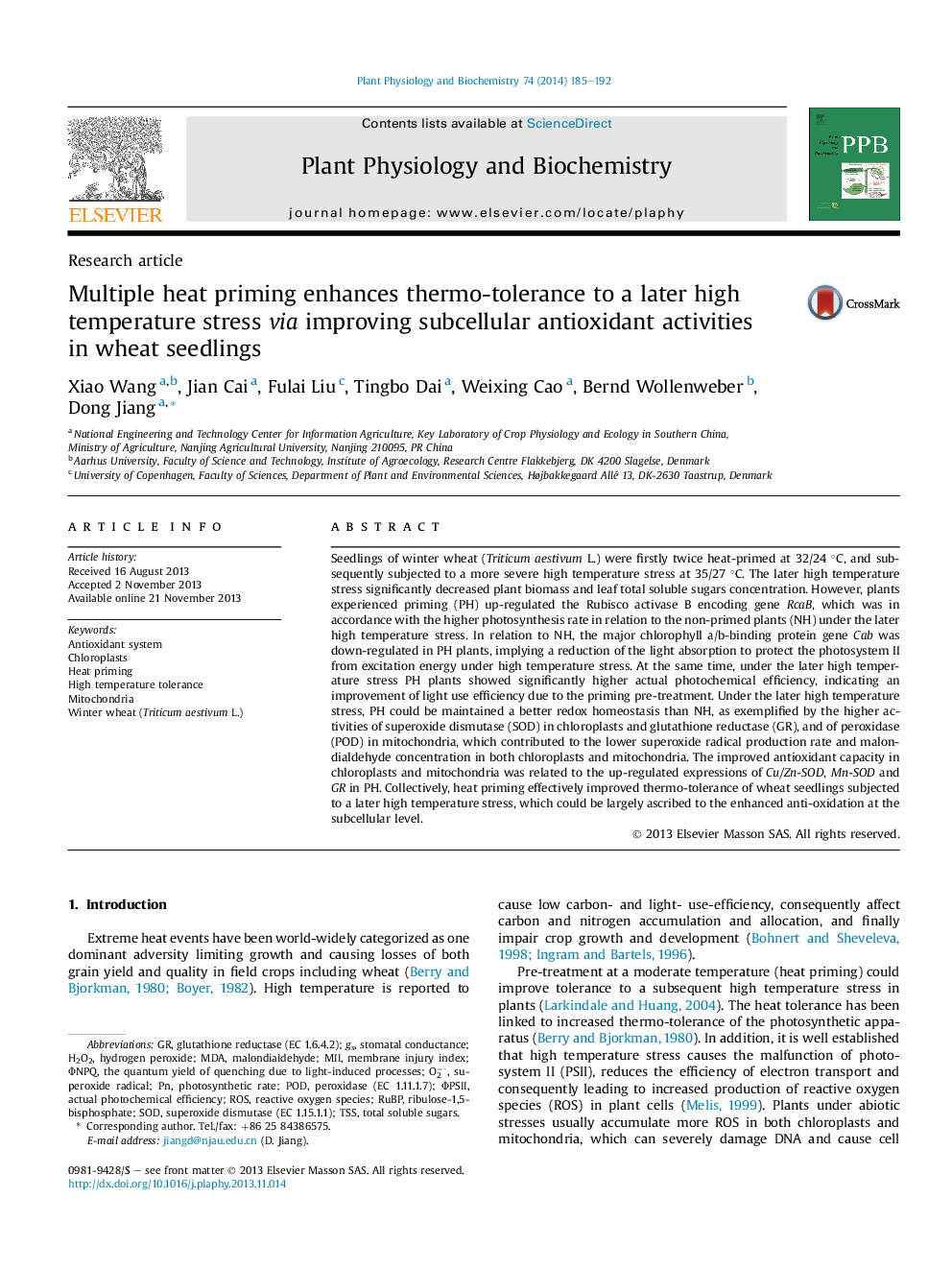| Article ID | Journal | Published Year | Pages | File Type |
|---|---|---|---|---|
| 2015951 | Plant Physiology and Biochemistry | 2014 | 8 Pages |
•Heat priming (HP) improved thermo-tolerance of wheat seedlings.•HP improved antioxidant capacity in chloroplast and mitochondria under heat stress.•HP regulated the expression of genes related to photosynthesis.•HP regulated the expression of genes related to antioxidant enzymes.
Seedlings of winter wheat (Triticum aestivum L.) were firstly twice heat-primed at 32/24 °C, and subsequently subjected to a more severe high temperature stress at 35/27 °C. The later high temperature stress significantly decreased plant biomass and leaf total soluble sugars concentration. However, plants experienced priming (PH) up-regulated the Rubisco activase B encoding gene RcaB, which was in accordance with the higher photosynthesis rate in relation to the non-primed plants (NH) under the later high temperature stress. In relation to NH, the major chlorophyll a/b-binding protein gene Cab was down-regulated in PH plants, implying a reduction of the light absorption to protect the photosystem II from excitation energy under high temperature stress. At the same time, under the later high temperature stress PH plants showed significantly higher actual photochemical efficiency, indicating an improvement of light use efficiency due to the priming pre-treatment. Under the later high temperature stress, PH could be maintained a better redox homeostasis than NH, as exemplified by the higher activities of superoxide dismutase (SOD) in chloroplasts and glutathione reductase (GR), and of peroxidase (POD) in mitochondria, which contributed to the lower superoxide radical production rate and malondialdehyde concentration in both chloroplasts and mitochondria. The improved antioxidant capacity in chloroplasts and mitochondria was related to the up-regulated expressions of Cu/Zn-SOD, Mn-SOD and GR in PH. Collectively, heat priming effectively improved thermo-tolerance of wheat seedlings subjected to a later high temperature stress, which could be largely ascribed to the enhanced anti-oxidation at the subcellular level.
